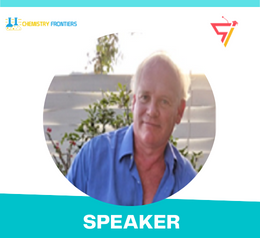Scholars 5th Edition
Frontiers in Chemistry Forum
THEME: "Frontiers in Chemical Sciences for Health, Energy, and Sustainability"
 27-28 Mar 2023
27-28 Mar 2023  Crowne Plaza Ealing, London, UK & Online
Crowne Plaza Ealing, London, UK & Online THEME: "Frontiers in Chemical Sciences for Health, Energy, and Sustainability"
 27-28 Mar 2023
27-28 Mar 2023  Crowne Plaza Ealing, London, UK & Online
Crowne Plaza Ealing, London, UK & Online 
University College Dublin, Ireland
Title: Historical ‘thermal’ and ‘Non-thermal’ microwave-assisted processes within microwave ovens
Victor John Law was born in London, U.K., on August 1, 1957. He received the B.Scs. degree from The Open University, Milton Keynes, U.K., in 1985 while he was with the Cavendish Laboratory Semiconductor Physics Group, University of Cambridge U.K., and obtained a Ph.D. degree (by published works) from the University of Ulster, Belfast, Northern Ireland, in 2005. Between 1999 and 2003, he was a Senior Research Fellow with University College London (UCL) U.K., and from 2003 to 2011, he held the post of Senior Research Fellow with Dublin City University (DCU) Ireland. Since 2012, he has held the post of Senior Research Engineer with the Surface Engineering Group, University College Dublin (UCD) Ireland. He has authored over 160 publications, with an H-index of 20, 10-index of 37, and an average of 18.5 for the first 100 papers. He is holder of one patent (US. 8.242789B2).
Some of the earliest reports of multimode domestic microwave oven (fo = 2.45 ± 0.05 GHz (?o = 12.2 cm) used for ‘non-thermal’ microwave-assisted inactivation of bacteria and bacteriophage began to be published in food processing and microbiology journals in the late 1990s. In these publications the ambiguous term ‘non-thermal’ or ‘athermal’ were used in an attempt to differentiate between dielectric volume heating (and ionic conduction) of the material under irradiation, and the obscured direct microwave interaction with the material itself, typical below bulk temperatures of 40oC.
This work presents a novel non-invasive acoustic measurement (that is easy to implement by non-electrical engineers) of the pulse width modulation (PWM) waveform of a domestic microwave oven. The acoustic measurement is applied to a Bluesky (BMG20-8) microwave oven to obtain the PWM time-base waveform. This information is applied to publications pertaining to ‘thermal’ microwave disruption of partially sliced grape and cherry tomato, and ‘non-thermal’ microwave disruption of microorganism suspensions.
Under these bio-material conditions, the following outcomes occur. For grapes and cherry tomatoes an imposed standing wave of ?m that approximates to n ¼, of ?o, simultaneously induces dielectric volume heating and Ohmic heating (‘non-thermal’) within 8 seconds of 440 W of microwave irradiation: either in continuous mode or 55% duty cycle in PWM mode. For the historical microorganism studies, the given ice and ice / water bath data is insufficient to make a complete thermodynamic analysis. Reverse engineering is performed to obtain the missing data and then used to calculate the heat transfer to and away the microorganism suspensions